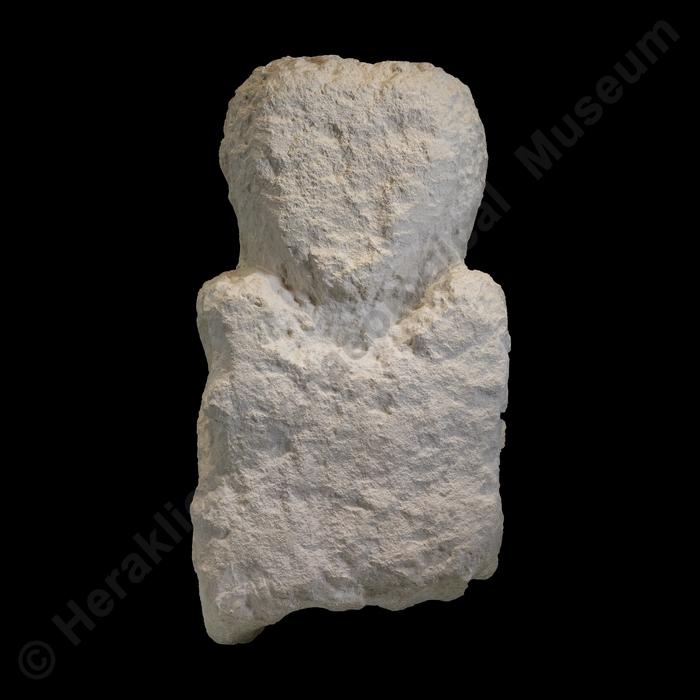Anthropomorphic cippus with Phoenician characteristics
Γ1126
Stone (Poros stone)
Bottom broken. Worn surfaces.
Height: 44 cm. Width: 24 cm. Thickness: 15.5 cm.
Knossos
Venizeleio Hospital
Early Archaic period:
early 7th c. BC:
Gallery:
XVICase:
160Exhibition thematic unit:
Geometric - Archaic - Classical period (10th-4th c. BC). Trade. Cultural influencesDescription
Anthropomorphic funerary stele (cippus) with crudely rendered features. The head is clearly distinguished from the body, without a distinct neck but with a strongly emphasised contouring of the flat, heart-shaped face, with its large almond-shaped eyes represented as deep cavities in the stone, a vaguely rendered closed mouth, perhaps with compressed lips, and scarcely differentiated hair. A cubical body with rough and rudimentary modelling of the chest reinforces the overall impression of an unfinished, stylised work. The parallels with works of Phoenician origin or artistic influence, combined with finds from Crete generally and Knossos specifically, indicate the presence of Phoenicians on the island or the circulation of artefacts with stylistic features and uses referring to the region of Syrophoenicia and its Cypriot trading-posts on the sea routes, with Cyprus as a key way-station.Bibliography:
Kourou, Ν. and E. Grammatikaki. "An Anthropomorphic Cippus from Knossos, Crete". In R. Rolle and K.Schmidt (eds), Archäologische Studien in Kontaktzonen der antiken Welt, Hamburg, 1998, 243-253. Kourou, N. "Phoenician Presence in Early Iron Age Crete Reconsidered". Actas del IV Congresso International de Estudios Fenicios e Punicos, Cadiz, 1995, 2000, 1071. Adam-Velemi, P. and E. Stefani (eds), Έλληνες και Φοίνικες στα Σταυροδρόμια της Μεσογείου, Thessaloniki, 2012, 157, no. 102 (entry by Μ. Kyrimi).Author:
K. S.Photographs' metadata
